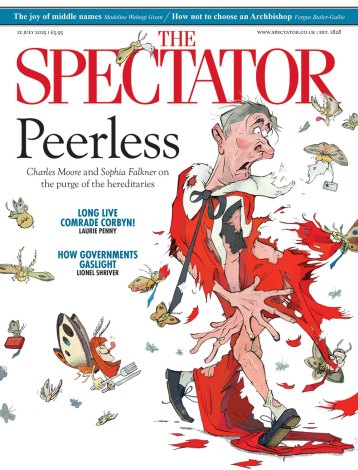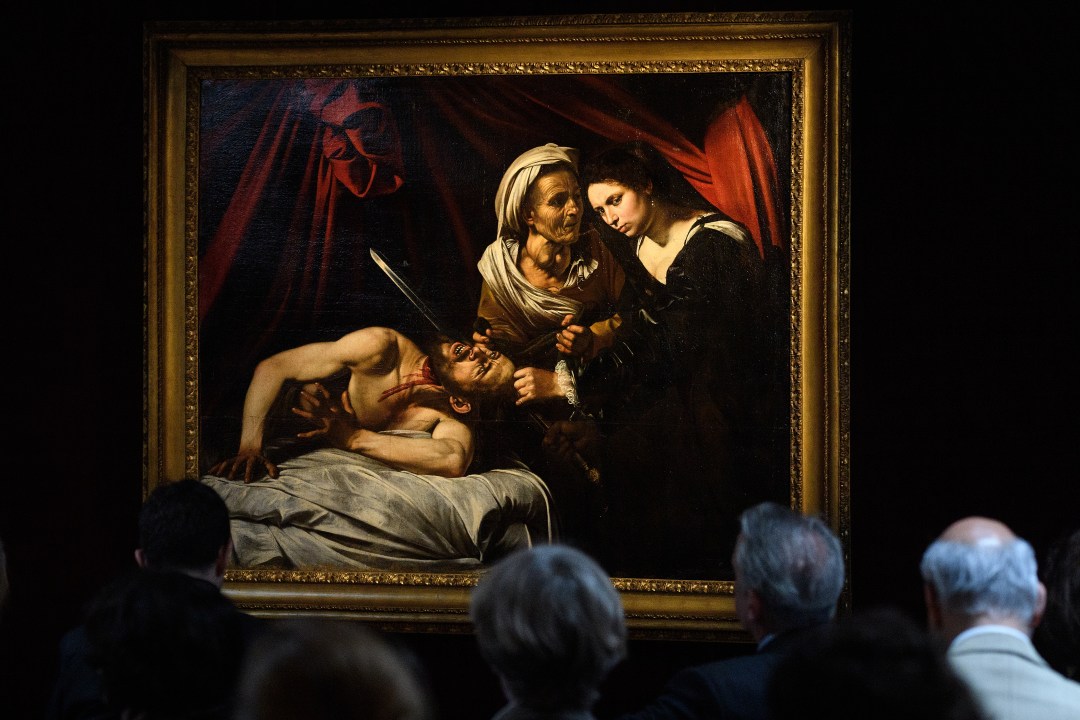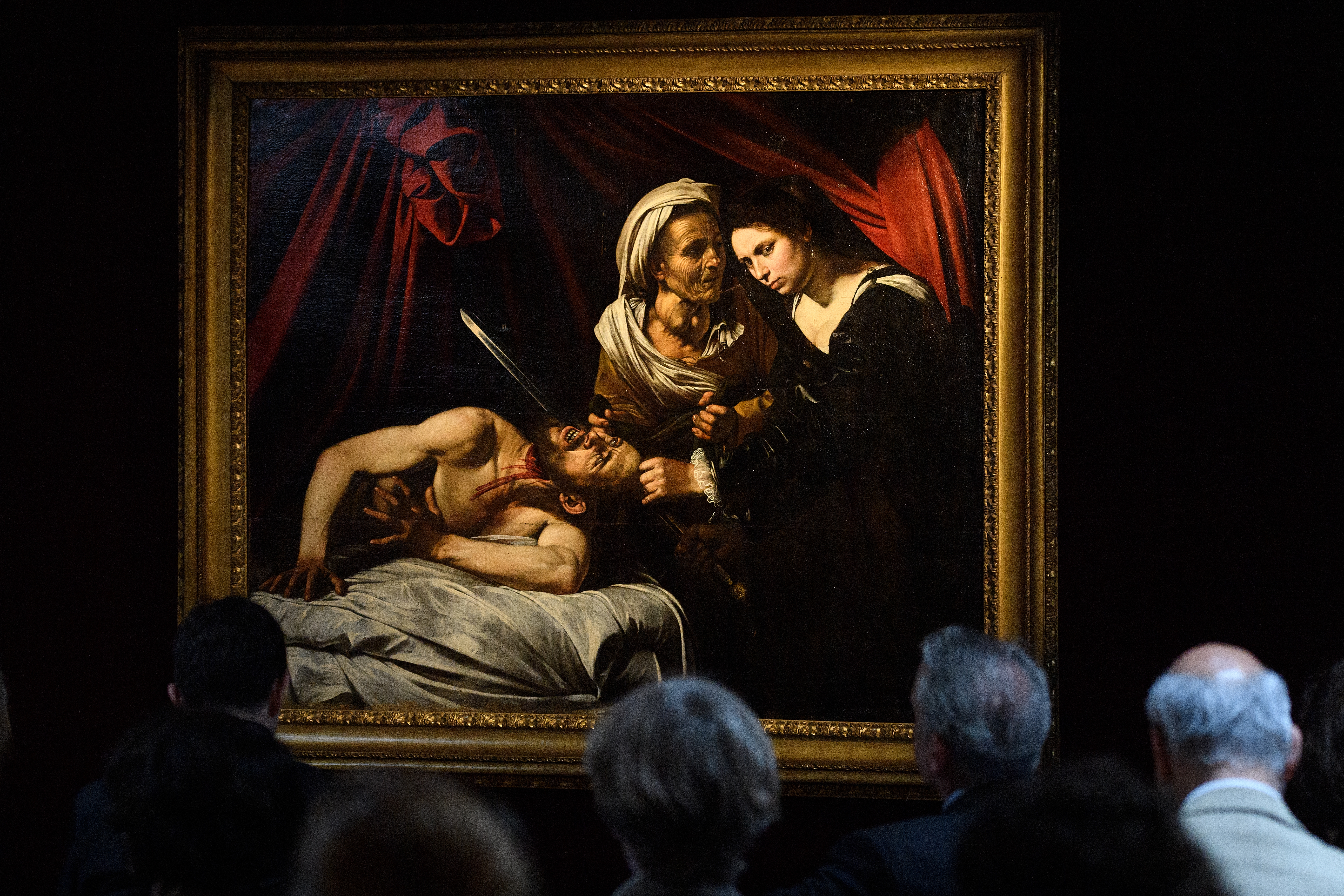Last month a painting that had been found in an attic in 2014, supposedly by Caravaggio, was put up for sale in an auction in Toulouse. The vendors must have known there was little interest, as they accepted a pre-emptive offer for an undisclosed amount. Surely it wasn’t what they were hoping for; but they will have done well enough so there’s no need to feel sorry for them.
It’s just business. But what about the painting? Why does it look so different – to put it politely – from everything that is known to have come from Caravaggio’s hand? Do our eyes deceive us, or have so many esteemed scholars misled us? Partly, I suspect, they misled themselves, by taking documentary and scientific clues for evidence, or even proof.
There are two letters from 1607 recommending a painting of Judith and Holofernes ‘by Caravaggio’ that was being offered for sale by Louis Finson, a Flemish painter and art dealer who had set up shop in Naples. Yet back then there was to be no mysterious buyer: we know, because the same painting was mentioned in Finson’s will when he died a decade later in Amsterdam. After this, the documentary trail soon goes cold.
Art historians thought they knew what the composition looked like, because another painting survives in Naples which was supposed to be a copy – and that painting has been attributed to Finson himself, primarily because he is known to have made copies of Caravaggio’s Neapolitan works (there are rumours that other paintings attributed to Caravaggio in major museum collections are actually Finson’s versions). The painting found in Toulouse was identical in composition to that copy, but livelier, so it was assumed to be the lost original.
It was then subjected to scientific testing which seemed to confirm its originality. Infra-red reflectography showed that the composition had undergone significant changes, proving that the artist had changed his mind and not merely followed a pre-existing model. Furthermore, the canvas and the dark brown ground layer applied over it were of just the sort used by Caravaggio while in Naples. Best of all there were incised lines at certain crucial points in the composition – the most famous quirk of Caravaggio’s working method.
On paper, everything seemed to add up for the attribution; but the paint insists otherwise. No artist ever made only masterpieces – though even on his worst day, hungover and running from the law, Caravaggio was much finer than this – but it is not just the quality, it is also the character of the painted marks that seems so wrong. Here is an analogy: Tolstoy may have written some less interesting stories, but if we happened to find a manuscript replete with spelling mistakes and garbled foreign idioms then, no matter how well the themes resembled Tolstoy’s, we would still doubt his authorship. In painting too there is education, and there are standards.
Gombrich once argued that style in painting is like an accent in speech; and even if ‘Judith and Holofernes’ is painted – roughly – in Caravaggio’s language, the accent in which it is painted does not seem consistently Italian. The artist’s fixation on the maidservant’s double goitre attests a northerner’s taste for the grotesque, to be described in crooked, wiry lines. Italian painting – including Caravaggio’s, even when trained on the most horrific subject matter – is elegantly paced. The lighting here is likewise too abrupt, and too scattered; and in picking out every ugly little detail, it breaks up the bigger picture. No Italian painting is ever so bitty, let alone Caravaggio’s: the rendering of a consistent and unified light, to fix us in the dramatic moment, was actually Caravaggio’s principal innovation – it had never been managed before, and it was never managed quite so well again after.
Caravaggio always thought as a dramatist, so it seems unlikely that he would have cast Judith – the fatal temptress – as such a dowdy old wench; and it seems even less likely that he would have had her look up and out at us in acknowledgement just as she was sawing through her tormenter’s neck. That one little gesture punctures the moment, deflates the drama, and renders the scene faintly ridiculous.
Thus the most important discovery made during the scientific analysis might be that originally, in the underpainting, Judith’s eyes were indeed focussed down on the job at hand. And her elderly maidservant, whose stripy face now draws our attention for the wrong reasons, originally had a more intense and dramatically appropriate expression.
So it is just about possible that the painting was started by Caravaggio and abandoned at an early stage when, as usual, he had to leave town in a hurry; and then it was finished off by Finson. Some scholars wish to attribute the picture fully to Finson, but the problem is that even though much of the paint seems like his in quality and character, Finson’s own inventions were never so Caravaggesque – his later works are still more old-fashioned and mannerist in conception.
It is generally believed that Finson gave Caravaggio working space in his shop in Naples, so it is no surprise that their materials and practices should match, and obviously it would have been easy for Finson to get his hands on Caravaggio’s own canvases. Assuming we are actually looking at the same painting referred to in the letters of 1607 – and that is a big assumption – it is easy to imagine why Finson, as an enterprising merchant, might have passed it off as a Caravaggio after any amount of re-touching.
We may even have reason to suspect that Finson and his old business partner, Abraham Vinck, were sometimes less than honest in their trading: when Finson died, Vinck organised an auction of the paintings he had left; and featured in that auction was yet another painting attributed to Caravaggio, of the ‘Crucifixion of St Andrew’. However it is known that Caravaggio’s original painting of that subject was bought – and probably also commissioned – by the Spanish Viceroy of Naples, who took it back to Spain with him in 1610; and an inventory proves that it was still in the old Viceroy’s family’s collection in Valladolid, in 1653. Whichever painting was auctioned off in Amsterdam in 1617 was not, therefore, the original (though to complicate things further, there is ongoing debate about whether one of the surviving copies of the composition might have been painted by Caravaggio himself).
The original ‘St Andrew’ must surely be the painting now in the Cleveland Museum of Art, which, though terrifically superior, is an important comparator for the Toulouse ‘Judith and Holofernes’ because the same old woman with the double goitre appears in both. The respective treatments of her goitre are very different – in the ‘St Andrew’, Caravaggio was of course astute and careful not to let it distract from her face – but the expressions on her face in both pictures are actually so similar, in such different contexts, that we may well wonder whether Finson still had a copy of the ‘St Andrew’ in his studio to use for reference if, and when, he was painting up the ‘Judith and Holofernes’.
It should also be noted that, as well as being copied, this ‘Judith and Holofernes’ composition appears to have had an influence: Battistello Caracciolo – the most inspired of Caravaggio’s Neapolitan followers – painted a ‘Salome’, now in the Uffizi collections, which seems to refer back to it. But our Judith, as she looks up and out at us, appears more like a Salome anyway; and it is also possible that both paintings simply reversed the figure grouping from Caravaggio’s own majestic ‘Salome’, now in the Palacio Real, Madrid.
Finally, it has to be admitted that the red tent and the white sheet in the Toulouse painting really do fold into patterns we might find in Caravaggio’s work of this period – the draperies, though finished off with too dry a touch, are still by far the best parts of the picture.
All of this indicates at least that the painting was created within Caravaggio’s immediate circle in Naples, 1607. So there was certainly cause to investigate further. But however suggestive the analysis – and no one wants to be labelled a denier of science, today – it still requires a leap of blind faith to declare the painting found in Toulouse a fully authentic ‘Caravaggio’, because most of what we see on the canvas is hardly even similar to what we should expect.
To trust the old documents is to trust in the good judgement and the pure motives of seventeenth-century merchants and experts, who do not seem to have been any more reliable than today’s merchants and experts. The scientific data may well be reliable, but it has only little to tell us; and it still needs to be sensitively interpreted. Some scholars may now wish to cast connoisseurship aside, but in the end attributing a painting correctly has to depend on the wise and fair use of our eyes.
The new ‘Judith and Holofernes’ is big and bold, with strong contrasts and large swathes of red. That was Caravaggio’s formula, and paintings that follow it tend to sell well. Yet they are not always by the master himself.







Comments